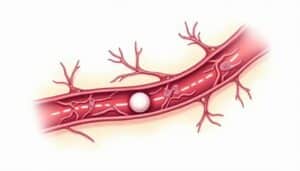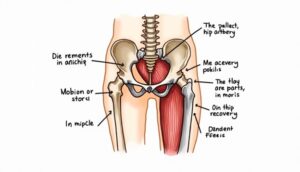
Hip Artery Embolization (HAE): A Minimally Invasive Option for Chronic Hip Pain

At Interventional Pain Institute, our interventional pain specialists are committed to helping patients find effective, minimally invasive solutions for hip pain without immediately resorting to surgery. One of the most innovative treatments we offer is Hip Artery Embolization (HAE), a groundbreaking procedure designed to relieve chronic hip pain and restore mobility.
If you’re struggling with persistent hip discomfort from conditions like osteoarthritis or avascular necrosis, HAE may be the solution you’ve been looking for.
What Is Hip Artery Embolization?
Hip Artery Embolization is a minimally invasive procedure performed by an interventional pain physician. Using advanced imaging guidance, the physician inserts a thin catheter into a small artery — typically in the groin — and directs it to the blood vessels supplying the hip. Tiny particles are then injected to block abnormal blood flow, reducing inflammation and helping relieve pain.
Unlike open surgery, HAE is performed through a small incision and typically allows patients to return home the same day.

Who Can Benefit From HAE?
HAE may be an excellent treatment option for patients experiencing chronic hip pain caused by:
- Osteoarthritis (OA): Cartilage breakdown leads to stiffness, swelling, and pain.
- Avascular Necrosis (AVN): Reduced blood flow causes bone damage and joint deterioration.
- Bone Tumors or Vascular Malformations: In some cases, HAE helps control abnormal blood flow and manage pain.
If you’ve tried conservative treatments like physical therapy, anti-inflammatory medications, or steroid injections without long-term relief, HAE may be a powerful next step — especially if you want to delay or avoid hip replacement surgery.
Why Choose Hip Artery Embolization?
- Minimally Invasive Approach
Unlike traditional hip surgery, HAE requires only a small incision and involves less tissue disruption, leading to faster recovery and minimal scarring. - Faster Recovery, Less Downtime
Most patients can go home the same day and resume light activities within a few days. Many return to work and regular routines much sooner than with surgical alternatives. - Proven Pain Relief
Studies show that HAE can significantly reduce chronic hip pain and improve mobility, enabling patients to return to daily activities and physical therapy. - A Bridge Between Conservative Care and Surgery
For patients who are not ready for hip replacement—or want to avoid it altogether—HAE offers an effective middle-ground option.
What to Expect During the Procedure
Our interventional pain specialists at Interventional Pain Institute follow a highly precise, image-guided approach to ensure your safety and comfort:
- Pre-Procedure Evaluation
- Imaging studies (MRI or CT scans) and lab work help us determine your candidacy for HAE.
- Local Anesthesia & Sedation
- You’ll remain comfortable and relaxed throughout the procedure.
- Catheter Placement
- A tiny catheter is inserted into the femoral artery and guided to the hip arteries using fluoroscopic imaging.
- Embolization
- Small, medical-grade particles are released to block abnormal blood flow in the hip joint, reducing inflammation.
- Post-Procedure Monitoring
- After a short observation period, most patients can return home the same day.
Recovery and Rehabilitation
Every patient’s recovery timeline is unique, but most experience minimal downtime:
- First Few Days: Mild bruising or soreness near the incision site is normal.
- First Week: Many patients notice gradual pain relief and improved mobility.
- Physical Therapy: A customized rehab plan may be recommended to strengthen the hip joint and support long-term results.
Our care team at Interventional Pain Institute will work closely with you to monitor your progress and help you safely return to your favorite activities.

Is HAE Right for You?
Hip Artery Embolization is not for everyone, but it can be a game-changing option for patients:
- Living with chronic hip pain that limits daily activities
- Seeking alternatives to hip replacement surgery
- Looking for a faster recovery and minimally invasive treatment
At Interventional Pain Institute, our interventional pain specialists take time to understand your unique condition and create a personalized treatment plan.
Take the Next Step Toward Relief
If hip pain is preventing you from living the life you love, you don’t have to wait for surgery to find relief. Our team at Interventional Pain Institute specializes in advanced, minimally invasive treatments like Hip Artery Embolization that help you move better and feel better — without a lengthy recovery.
Disclaimer: The views expressed in this article are the personal views of the author and do not necessarily represent and are not intended to represent the views of the company or its employees. The information contained in this article does not constitute medical advice, nor does reading or accessing this information create a patient-provider relationship. Comments that you post will be shared with all visitors to this page. The comment feature is not governed by HIPAA, and you should not post any of your private health information.
You Might Also Enjoy...


Safe Yard Work and Gardening Tips from Your Interventional Pain Medicine Doctor

What is a Nerve Block and How Can it Can Help You

How Can a Spinal Cord Stimulator Help Me?

From Chronic Pain to Pain-Free: Jane’s GAE Success Story

